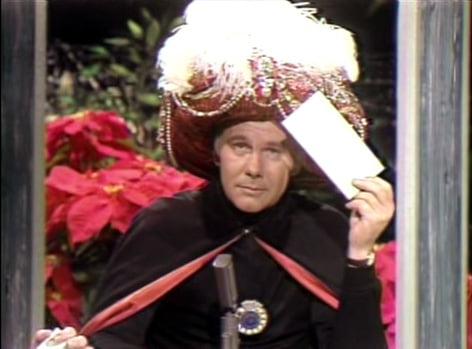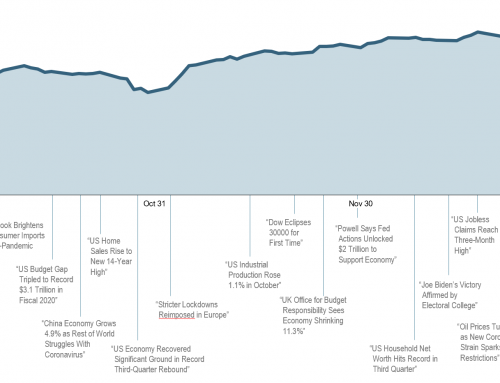In 1987, the world was a different place. Ronald Reagan was challenging Mikhail Gorbachev to “tear down this wall!”, Johnny Carson was interviewing the likes of Burt Reynolds, Tom Selleck, and Michael J. Fox on The Tonight Show, Les Miserables premiered on Broadway for the first time ever, and Dione Warwick, Elton John, Gladys Knight, and Stevie Wonder took the Grammy’s with their hit, “That’s What Friends Are For”. The Dow Jones Industrial Average crossed 2,000 for the first time.
 What’s so significant about 1987? Not much, other than it was exactly 30 years ago, which is also about the same amount of time the average married couple will be retired these days (assuming they retire in their 60’s, and one of them lives into their 90’s). On one hand, 30 years seems like forever ago, and on the other hand, not really. You can still hear Ed McMahon, “Heeeerrrrre’s Johnny!”
What’s so significant about 1987? Not much, other than it was exactly 30 years ago, which is also about the same amount of time the average married couple will be retired these days (assuming they retire in their 60’s, and one of them lives into their 90’s). On one hand, 30 years seems like forever ago, and on the other hand, not really. You can still hear Ed McMahon, “Heeeerrrrre’s Johnny!”
Fast forward to 2017 and the Berlin Wall is now a figment of history books, Johnny Carson’s replacement, Jay Leno, has also since retired after his own 22 years at the Tonight Show, and Dione Warwick, Elton John, Gladys Knight, and Stevie Wonder are all likely receiving SSI checks. The Dow has added another zero, having crossed 20,000 for the first time ever on January 25, 2017.
Had you asked someone in 1987 how long it would take for the Dow to get to 20,000 (from the then record-high of 2,000), most would have laughed at you and thought you crazy. “Don’t you know, the economy is bad, we’re in a cold war, and there’s a celebrity President in office with no previous government experience?!?”
To go from 2,000 to 20,000 over 30 years, you need to sustain about an 8% annual growth rate in the stock market (slightly less than the long-term market average of 10%). Since 1987, we’ve seen the crash of ’87, Gulf War I, the dot.com blowup of 1999/2000, the 9/11 terrorist attacks, the Iraq and Afghanistan wars, the 2008/2009 financial crisis, Greece going bankrupt, Chinese stock market dropping in half, Britain seceding the EU, and yet, the US stock market somehow still maintained an 8% growth rate through all of that. How? Economies adapt and markets respond. We’re stubbornly resilient at fixing our issues and coming back stronger than before. It’s just who we are. We’re always seeking to improve our standard of living and our way of life. Think back to your lifestyle 30 years ago and compare it to how you live today. I imagine it looks a bit different. Now imagine where you’ll be and what your life will look like 30 years from now.
This constant evolution, augmented by gains in technology, has led to an increase in the exchange of goods and services, the very core of how an economy works and expands. We’ve done it repeatedly for many decades, even centuries. The American economy is robust. Unless you whole-heartedly believe we will work to actively reduce our standard of living over the next 30 years, we will probably see some similar version of what the last 30 years has held. The advance is permanent, the declines are temporary.
Now we’re sitting here in 2017 with the markets at all-time highs, plenty of uncomfortable news around the world, and a celebrity US president in office with no previous government experience. Where will be 30 years from now? Nobody has any idea, but if we continue our same 8% market growth through all the turmoil and world events that will surely occur over the next 30 years, we’ll be somewhere around 200,000 on the Dow. Crazy, I know, but it’s just math.
Even if we’re in a “new normal” and growth is a full 25% lower for the next 30 years (6% instead of 8%), we’d still be somewhere around 115,000 on the Dow. And if we go back to the long-term average of 10%? Try somewhere around 350,000 on the Dow. Now we’re talking full-on crazy.
The point of this is not to try and predict where we’ll be 30 years hence. The point is that if I could go back 30 years to 1987 and buy when the Dow was at 2,000, would you want any? What about when it was at 200 (which was in 1946, about 39 years before 1987)? Any way you slice it, 20,000 on the Dow is just a number, and in time, might look like a small number.
So, does this mean we should all rush out and double down our stock positions? No. But does it mean we should take a hard look at where we want our assets positioned over the next 30 years? Probably. Ownership in good companies run by smart people listening to and profitably serving their customers will forever be the backbone of wealth generation in this country. Always has, always will.
By the way, your dollar in 1987? It’s worth about $0.45 today. Stocks have gone up 10x since 1987, the value of my crispy $1.00 bill has been cut in half. Remind me again, which one carries more risk?
Spring is springing – enjoy your weekend!


